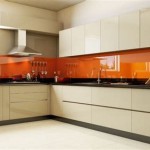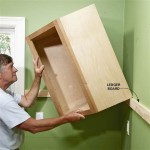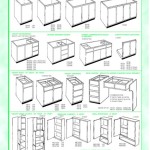Essential Aspects of Rolling Paint Kitchen Cabinets for a Flawless Finish
Painting kitchen cabinets can transform their appearance while refreshing the overall kitchen aesthetic. Rolling paint offers a smooth, even finish that enhances the cabinets' beauty. However, achieving a flawless result requires careful preparation and expert execution. This article explores the essential aspects of rolling paint kitchen cabinets, ensuring a professional-quality finish that will last for years to come.
1. Preparation is Paramount
Thoroughly prepare the cabinets before applying paint. Remove all hardware, doors, and drawers. Clean the surfaces with a degreaser to remove grease and grime. Any existing finish should be lightly sanded to create a smooth and adhesive surface. Pay attention to corners and edges, as these areas require extra care.
2. Choose the Right Paint
Selecting the appropriate paint is crucial. Opt for a high-quality, cabinet-specific paint designed to adhere to wood surfaces. Consider the sheen level, as higher-gloss finishes provide a more durable and easy-to-clean surface. Rollers designed specifically for painting cabinets offer a smoother application, reducing the risk of brush marks.
3. Prime the Surfaces
Apply a coat of primer to create a base for the paint. Primer helps to seal the wood and prevent the natural tannins from bleeding through the paint. It also provides better adhesion, ensuring a longer-lasting finish. Use a high-quality primer designed for kitchen cabinets.
4. Roll Evenly
When rolling paint, start at the edges and corners, using a small brush or foam roller. Apply the paint in thin, even strokes, avoiding overloading the roller. Roll in the direction of the wood grain for a smoother finish. Overlap each stroke slightly to prevent visible seams.
5. Dry Between Coats
Allow ample drying time between coats. Check the manufacturer's instructions for the specific paint you are using. Drying time can vary depending on the temperature, humidity, and paint type. Applying a second coat too soon can cause the paint to peel or crack.
6. Sanding and Touch-ups
After the final coat has dried, lightly sand the surface with a fine-grit sandpaper to remove any rough spots or imperfections. Use a tack cloth to remove sanding dust. Apply touch-ups as needed to cover any missed areas or imperfections.
Rolling paint kitchen cabinets requires meticulous preparation and careful execution. By following these essential steps, you can achieve a professional-quality finish that will enhance the beauty and functionality of your kitchen for years to come. Remember to use high-quality materials, take your time, and allow ample drying time for a flawless result.

Should I Use A Brush Or Roller To Paint Cabinets Upvc Sprayers

The Best Paint Roller For A Smooth Finish On Cabinets And Furniture

How To Paint Kitchen Cabinets In 7 Simple Steps

Is It Better To Spray Or Roll Kitchen Cabinets Painting

How To Paint Kitchen Cabinets In 7 Simple Steps

How To Paint Kitchen Cabinets Budget Friendly Makeover

The Best Paint Rollers For Cabinets Story Jenna Sue Design

Hand Painting Or Spraying Cabinets What Is Better Porch Daydreamer

What You Need To Know Before Painting Cabinets The Palette Muse

How To Spray Paint Kitchen Cabinets Diy Family Handyman








